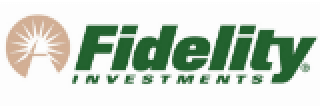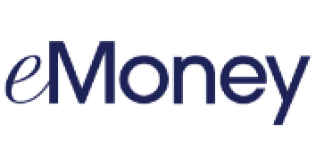Although investors can never know exactly where markets are heading, the investment landscape typically contains pockets of predictability. Long-standing policy expectations or economic trends, for instance, can offer guideposts in uncertain times. In the first quarter of 2025, however, these guideposts have all but disappeared – the only certainty has been uncertainty.
In Washington, the Trump administration’s economic policies continue to be a moving target. Although tariffs on China are moving ahead, levies on Canada and Mexico have been repeatedly threatened and walked back. In terms of domestic policy, there are still many unanswered questions on the scale of tax and spending cuts.
Monetary policy expectations are also becoming increasingly unstable. While markets still anticipate rate cuts this year, elevated inflation expectations are complicating the picture. Estimates of the ‘term premium’ have risen, indicating that investors are less confident in their rate forecasts.
Finally, the real economic outlook is complex. Corporate earnings growth has been strong, but companies are increasingly issuing negative future guidance. In the labor market, hiring activity is cooling as businesses take a cautious approach, with unemployment ticking up slightly in February.
This backdrop may seem to complicate the investment environment. It certainly has become harder to predict where markets will be in a year’s time. But in a sense, this endemic uncertainty has also made asset allocation decisions more straightforward. With interest rates at generationally high levels, the relative stability of fixed-income assets looks increasingly attractive.
Bond Yields & Equity Valuations Have Risen
To set the scene for today’s market, it helps to look back at recent history and understand how the environment has evolved. Just a few years ago, US interest rates were barely above zero. Throughout the Covid pandemic, the Fed kept rates low and flooded the financial system with liquidity in an effort to support the economy. As of early 2022, the risk-free rate on a 1-year US Treasury sat at 0.50%.
But when the pandemic faded, rising inflation forced the Fed to reverse course. After a series of aggressive interest rate increases, the 1-year yield climbed to more than 5%. Although that figure has since fallen to around 4%, bond investors can still earn nearly 8x greater yields compared to three years ago.
Looking at the stock market, equity indexes are coming off two years of exceptional performance. In both 2023 and 2024, the S&P 500 gained more than 20%. While this price appreciation has been rewarding, it has not been fully matched by earnings growth. As a result, stock valuations have been pushed to elevated levels.
One of the most popular ways to measure market valuations is to look at how much it would cost to buy a dollar of earnings over the past year. Today, this ‘trailing price-earnings ratio’ sits at 26.8x for the S&P 500. That is well above a long-term average of ~19x, even after the recent equity pullback.
To summarize in plain English: over the past few years, bond yields have risen substantially, while stock prices have become more expensive. Because bond yields are known ahead of time while forward stock returns are not, this trend has important implications in such an uncertain environment.
Fixed-Income Assets Offer Predictability
At Sound View, our asset allocation decisions revolve around one overarching question: What portfolio gives an investor the best chance of achieving their long-term financial goals?
This framework links investment advisory and financial planning, two areas often viewed through separate lenses. Long-term financial plans typically come with a ‘target return’ that an investor needs to achieve based on their goals. In our view, the purpose of a portfolio is to help an investor predictably and reliably hit this target.
When it comes to generating predictable returns, fixed-income assets are a crucial tool. If an investor holds a fixed-rate bond to maturity, they know exactly what return they will earn ahead of time (so long as the bond does not default, a risk that can be mitigated with high-quality assets).
Equities do offer more compelling returns than bonds – but only on average. In any given year, stock returns are inherently uncertain. This makes equities challenging to use as a planning tool since rising stock exposure leads to declining return predictability.
As a result, investors should only bear the level of equity uncertainty necessary to achieve their goals. And since bond yields have risen so much, that necessary level has fallen significantly in recent years. Investors can now earn their target returns with a more conservative allocation.
To that end, we are in the process of increasing fixed-income exposure across many client portfolios. Although the specific details depend on individual circumstances, we believe that increasing fixed-income holdings by 10 or 15 points can make sense in the current environment. While the asset mix will vary between clients, we view short-term Treasuries and high-quality corporate bonds as providing the most compelling opportunities in fixed-income.
Importantly, this is not an assertion that stock markets will have a poor year ahead. Although high valuation levels amplify equity risks, the S&P 500 could turn out to have another stellar year. As the past few weeks have demonstrated, however, the risk of equity underperformance remains. And with high-quality bond yields eclipsing 5%, investors do not need to bear as much of this risk as they once did.
Looking Ahead: Uncertainty Remains
While the predictability framework is a useful starting point, comprehensive portfolio construction requires understanding an investor’s unique goals and risk tolerance. This is especially true given the complex outlook for the rest of the year.
As the second quarter begins, our team remains focused on understanding the shifting policy signals from Washington. Depending on how tariffs and a potential trade war evolve, the economic impact could be significant. Although inflation is often viewed as the main risk of tariffs, growth could also slow if retaliatory tariffs make US firms less competitive globally.
In addition, we continue to analyze the fixed-income universe for compelling opportunities to deploy capital. Since we believe that the Fed may be slower to cut rates than the market anticipates, we view the short end of the yield curve as relatively attractive.
If you have questions or concerns about how your portfolio may be affected by our team’s asset allocation adjustments, we invite you to contact our office today. By keeping us apprised of your life circumstances and future plans, our team can best help you achieve your long-term financial goals.
Disclosure:
The information, analysis, and opinions expressed herein are for general and educational purposes only. Nothing contained in this commentary is intended to constitute legal, tax, accounting, securities, or investment advice, nor an opinion regarding the appropriateness of any investment, nor a solicitation of any type. All investments carry a certain positive risk, and there is no assurance that an investment will provide performance over any period of time. An investor may experience loss of principal. Investment decisions should always be made based on the investor’s specific financial needs and objectives, goals, time horizon, and risk tolerance. The asset classes and/or investment strategies described may not be suitable for all investors and investors should consult with an investment advisor to determine the appropriate investment strategy. Information obtained from third party sources are believed to be reliable but not guaranteed. Sound View Wealth Advisors Group, LLC makes no representation regarding the accuracy or completeness of information provided herein. All opinions and views constitute our judgments as of the date of writing and are subject to change at any time without notice.





